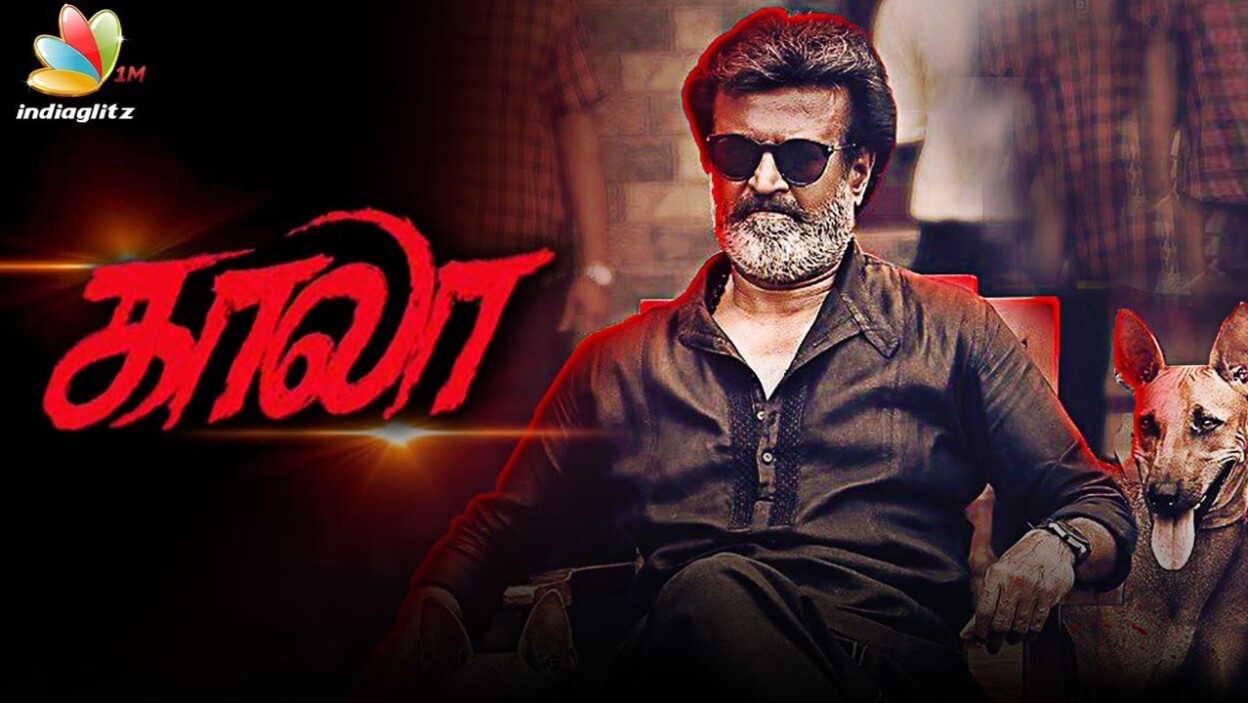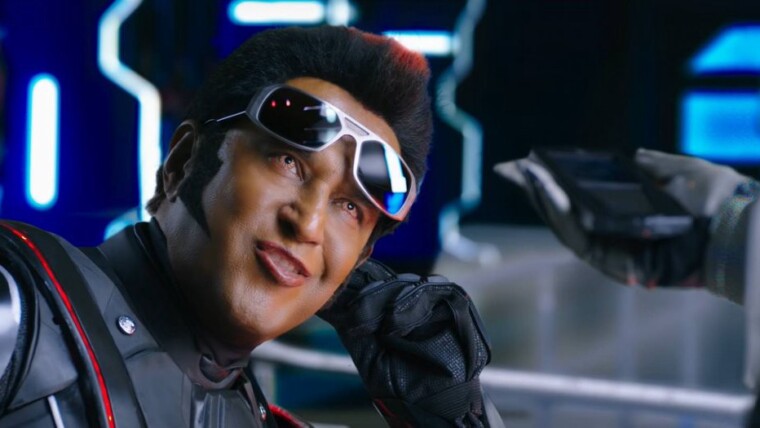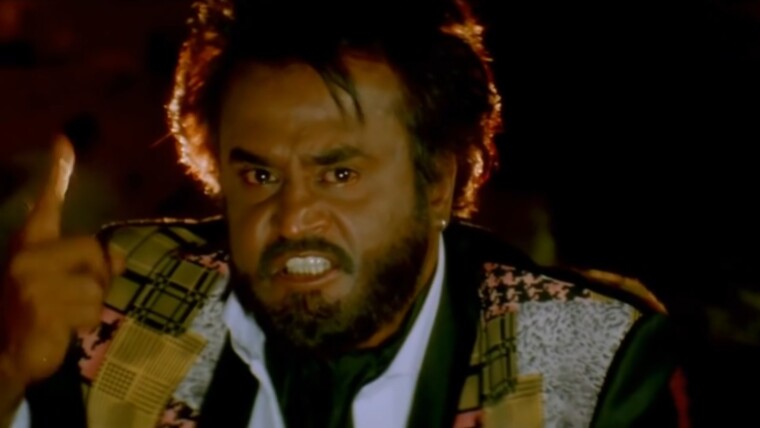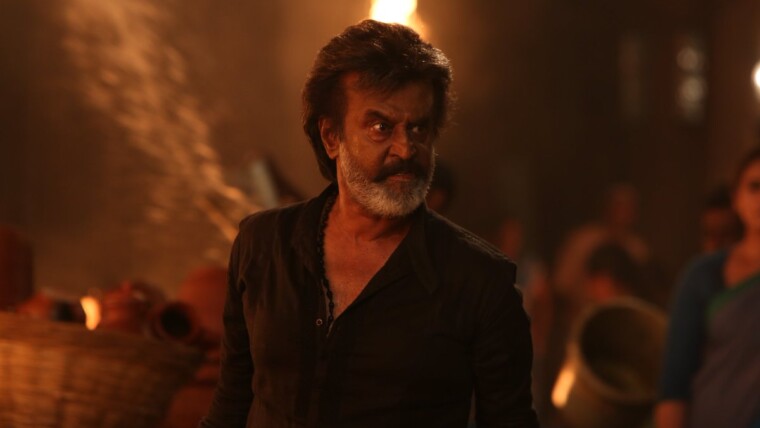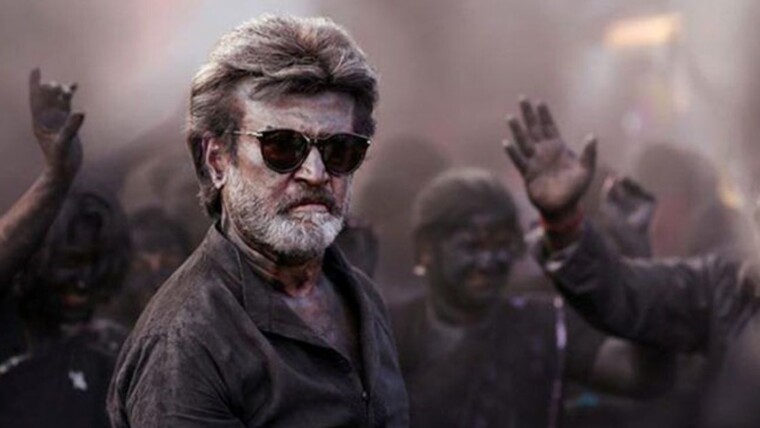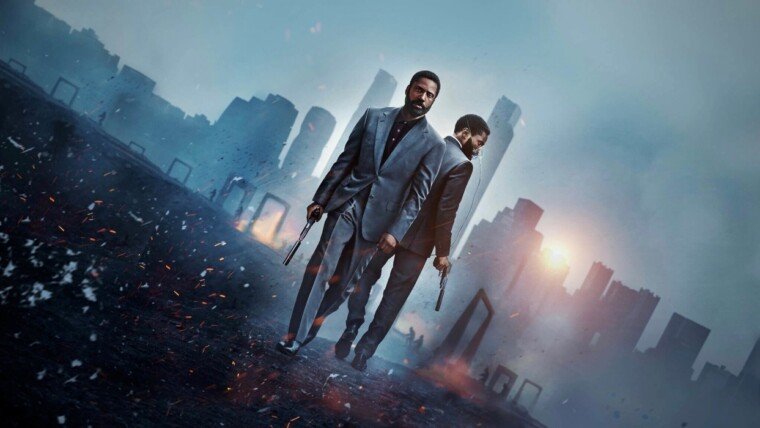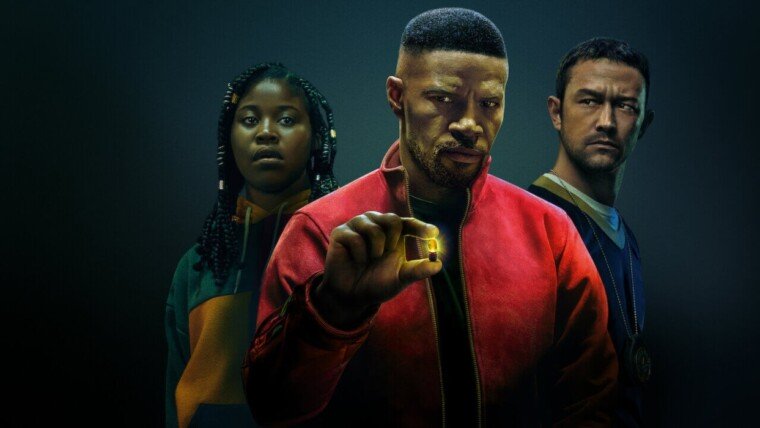This review contains spoilers from Kaala.
The black fonts are my original thoughts after my first viewing. Since then, I’ve watched this movie multiple times and the blue fonts are a commentary on my original review.
To answer your question: No.
No, Kaala is not one of Rajinikanth’s all-time great movies. No, it is not in the same league as Baasha, Thalapathy, Padaiyappa, Annamalai and Muthu. No, it doesn’t hold a candle to Rajinikanth’s second tier movies — Baba, Arunachalam, Chandramukhi, Sivaji — either. No, it isn’t Rajinikanth’s fault. At 67 years old, the man is still rocking as hard as he has ever rocked 30 years ago. But while Rajinikanth’s awesomeness has successfully elevated mediocre material before (i.e. Baba), it isn’t enough here, because of the way the film is designed.
The second half of Kaala is one of, if not THE BEST Rajinikanth movie (s). I’ve watched this Pa. Ranjith film four, maybe five times now and I simply cannot get enough of the second and third act especially the hair-raising final sequence. It’s the first half, particularly a 20-minute romance subplot that almost kills the movie. While I still do not find Kaala to necessarily be as good as Baasha, Thalapathy, Padaiyappa, Annamalai and perhaps Muthu, it’s sure as hell better than the rest. I’ve even changed the title of this review from ‘Bold and Different but Ultimately Disappointing’ to ‘Bold, Different and Effective.’ Oh, how the tides have changed, DRAMATICALLY.
Kaala is above average and I left the cinema feeling disappointed and gravely heartbroken. But before you start cursing at me, calling me a non-fan, a short aside.
The movie isn’t above average, I am.
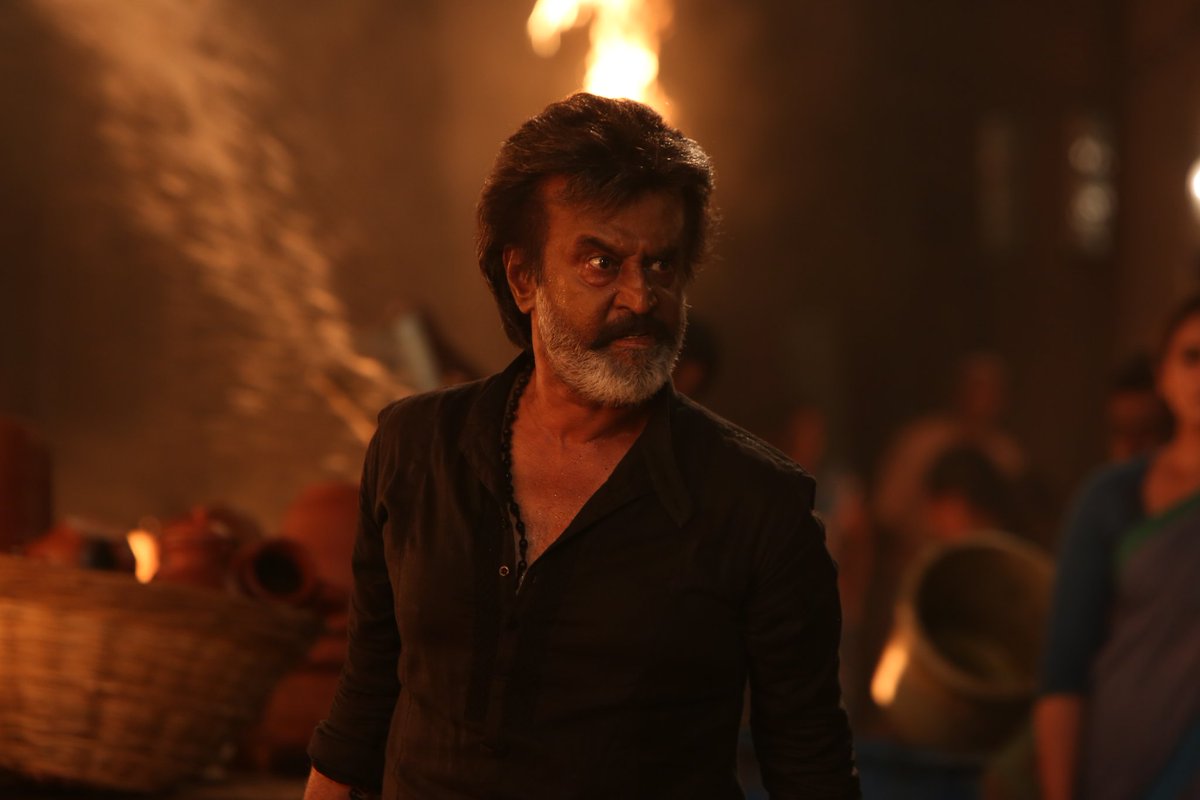
I love Superstar Rajinikanth. I would even go as far as to say that ‘thalaivar’ (meaning leader — as his fans call him) played as big a role as Star Wars, The Lord of the Rings and Nolan’s The Dark Knight Trilogy in cultivating my deep love and ever-growing passion for film, especially during my younger days. I know, crazy right?
I’m also one of them weirdos who willingly and excitedly queues up for hours on end for opening night tickets every time a Rajinikanth movie hits the big screen, and have been doing so for the past 19 years. It started with Padaiyappa in 1999, when I was merely six years old and uninitiated. I vaguely remember standing in line with my dad before the ticket counter had even opened. I remember how crowded it was at night, as the rabid crowd shoved and squeezed, making life very difficult for the ticket taker who had a look of defeat plastered across his face.
And when I finally watched the movie, I was enamoured by the crowd reaction to his opening title card — this mofo is so badass, he has his own opening title card (think the Marvel logo at the start of every MCU movie) — and captivated by the audience’s whistles and cheers when he first makes his emphatic appearance.
https://www.youtube.com/watch?v=hYa9vfSqnzQ
Rajinikanth’s presence brings that out of you. Even until now, I will argue that Rajini is the most charismatic movie star working today, perhaps of all time. And I don’t just mean in Indian cinema but across the globe.
But yes, I am disappointed in Kaala just as I was with Kabali a couple of years ago. Both movies are helmed by Pa. Ranjith, and both suffer almost similar problems — great ideas, poor execution — though, Kaala is much better than Kabali.
While I do not find this film disappointing anymore, there are still some noticeable issues when it comes to execution.
An anti-Rajini film.
Kaala is a very different Rajinikanth film. The ‘S U P E R S T A R R A J N I’ title card, regardless of its variation, is always accompanied by a crowd-pumping musical score (as seen in the video above). But here, we get a muted version of the Kabali theme, with an underlying sombreness to it that is unprecedented. It reminded me of the Marvel title card in Avengers: Infinity War. Watching the title card in Kaala, it became clear to me that Pa. Ranjith was going to give us something offbeat. A Rajinikanth movie, unlike anything we’ve ever seen. I became very, very curious.
As far as different goes, Ranjith delivers.

When we first see Rajinikanth in Padaiyappa, he kisses a snake and gives the crowd a stylistic salute. Muthu and Baasha both open with a kickass song sequence (in the former he rides a horse, in the latter, he dances with a ton of people).
Here, he plays a friendly game of cricket with the kids in his neighbourhood and loses. At the start of the film, when the villain (first of two) creates a ruckus in his village, you assume he’s going to fight, but instead, his eldest son delivers the beating, while he observes quietly. The subversion of tropes continues (almost) throughout the film, including the awesome “setting ah?” scene we see in the trailer. Pa. Ranjith sets up a big RAJINIKANTH FIGHT SEQUENCE only for Kaala’s eldest son and gang to arrive right on time and do the fighting for him.
Pa. Ranjith even includes a small, side character named Sivaji Rao (Rajinikanth’s birth name), who is later killed in the movie, symbolising the anti-Rajini movie that Kaala is… trying to be. These are all interesting creative choices that would’ve made for a fantastic film if only Kaala wasn’t in constant conflict with itself.
Trying to be? More like succeeding! The movie still at times feel like it’s battling itself, but for the most part, particularly the brilliant second half, Pa. Ranjith has given us something special — a film that warrants discussion and debate and scrutiny.

Kaala is a political movie centred around the caste system that is still deep-rooted in Indian culture. Ranjith also ingeniously combines that with an interesting look at the Ramayana and Ravana story. What if the light-skinned Ram is actually a racist? In this movie, Kaala, the hero, is dark skinned and only dons black (and occasionally blue), while the elitist villain only dons white. At one point, the villain (played brilliantly by Nana Patekar) says, “I want to make this country clean… and pure,” which mirrors Donald Trump’s “make America great again” sentiments. Like I said, this is a different type of blockbuster.
But calling a movie different, isn’t a compliment nor a criticism. It just is. What matters is whether the ‘different’ moves you in ways you don’t expect it to. Anybody can make different. But not everybody can make different work. Rian Johnson made different work with The Last Jedi. Shane Black made different work in Iron Man Three. Pa. Ranjith tries and while that deserves praise, it doesn’t equate to success.
While Pa. Ranjith may not have been as masterful in his handling of this material as Rian Johnson was with The Last Jedi, he still does a pretty damn good job. He even does something that Shane Black wasn’t able to, which is sticking his landing.
Kaala is a film that does not know what it is. Is it a mass/masala extravaganza or is it a grounded movie? And I don’t mean it has to find itself on either end of two extremes — I’m not saying a movie either has to be Maari (a senseless, joyride) or Visaranai (A realistic depiction of corruption and the cruelty that goes on in prisons). Take last year’s Mersal for example. Mersal is a mass movie with ridiculous fight sequences, one-liners, song sequences and all your usual jazz, but it also interweaves a discussion about India’s medical landscape into its narrative.
Kaala doesn’t need to be Mersal or Maari or Visaranai or follow in the steps of the many great Rajinikanth mass movies that came before it. It can and should be whatever it wants to be, but it needs to move with certainty and fearlessness. Unfortunately, Kaala trembles and shivers. It does not exude confidence.
Throughout the film, I felt Pa. Ranjith’s struggle, so much so that I could hear the tiny cartoon angel and devil in his head screaming at each other. Pa. Ranjith is trying to juggle what he wants to do with what he thinks he needs to do (for the purpose of pleasing fans or making money or not causing riots).
Pa. Ranjith wants to make an anti-Rajini film — a deconstruction if you will. He wants to make a movie that is nuanced; a movie that is more about the story than it is about Rajinikanth. Yet Rajinikanth has a theme song here that is as loud and showy as his classic mass/masala flicks. Why not a more subtle soundtrack?
I actually now find that the showy musical score works to the film’s benefit. It gets us pumped for a fight scene we’re expecting to happen, only for Pa. Ranjith to pull the rug from under our legs. Besides, save for one excruciating ‘Kannama’, Santhosh Narayanan’s score/soundtrack is bloody brilliant. It’s right up there with Ludwig Göransson’s Black Panther album as the best of the year.
He wants to make a movie that is more about the community than it is about Rajinikanth. Yet, we don’t spend nearly enough time with any other character as we do with Kaala.
He wants to tell a story where Rajinikanth already has a wife and a family, a movie without the shoehorned-in romance you would find in a conventional mass movie. Yet, there is a whole side story that goes on forever, where Kaala meets his lover of yesteryears with a cringe-worthy love song and omg cut the crap.
I wish I could tell you that it gets better after multiple viewings. But it doesn’t. The romance subplot between Kaala and Zareena (Huma Qureshi) runs for 20 minutes but feels like an hour. It is embarrassing! So much so that I can’t bear looking at the screen — in my third viewing, I actually walked out of the cinema and took a 15 minutes stroll. What is the purpose of this extended sequence? What does it add to the movie? Can anyone actually make a compelling case for this subplot and convince me that it shouldn’t be removed from the movie?
Pa. Ranjith wants to make a movie where Rajinikanth has passed the age where he physically punches people and is now sorta a Vito Corleone-esque figure — someone who has acquired so much respect in his community; someone who always has a calming presence but with anger brewing just beneath the surface; someone who can make his enemy’s balls tremble just by talking — yet, there are scenes where Kaala singlehandedly and efficiently whoops so many people’s asses (while his theme blares in the background), you wonder why he doesn’t just do it more often.
In the end, Kaala is the very thing it is trying not to be.
The, what is now famously known as the ‘rain fight scene’, is gorgeously shot by cinematographer Murali G. It is one of the most good looking and well-earned fight sequences of the year, thus far. But it is also a scene that makes Kaala the very thing it is trying not to be. Wouldn’t it have been more effective — in terms of subversion of tropes and also storytelling — had Kaala’s son Selvam (and gang) beaten up Vishnu (Sampath), only for Kaala to arrive in the car, after that (while his theme blares in the background) and laid the killing blow?
Kaala has no Rhythm.

I can isolate scenes in Kaala and point out its greatness. Like the prayer scene at the villain Hari’s (Nana Patekar) house, in which the priest recites the story of Ravana. Or the unorthodox nature of the ‘setting ah?’ scene. Or the scene where members of the community shield Kaala from the bullets. Or the gorgeously shot final sequence where black powder is being sprayed on the villain. Those are great scenes that work in isolation.
But as a whole, Kaala is flat and uninvolving.
Kaala has a great story, with profound themes and interesting ideologies. In fact, its story is so bold that it’s surprising that a megastar agreed to act in it (most big-name Indian actors prefer not to star in a movie that may potentially stir up the hornet’s nest). Once again, I applaud Pa. Ranjith.
But a STORY doesn’t make or break a movie, the STORYTELLING does. To quote the granddaddy of film criticism, Roger Ebert:
“It’s not WHAT a movie is about, it’s HOW it is about it.”
Kaala has no rhythm.
It doesn’t have ups and downs, it doesn’t have escalating tension or conflict, it doesn’t slowly build up towards its intermission nor its climax. It doesn’t glide smoothly from one scene to another. It limps. And it is completely void of emotion. Imagine a song with only one note.
My mind has changed quite a bit when it comes to this as well. Kaala doesn’t flow as smoothly as it should, especially in the first half, mainly because of the CRAPPY, aforementioned subplot but, Pa. Ranjith does a good job of recuperating and moving the story forward thereafter.
There are political lines that feel unnecessarily heavy-handed/dumbed down. When the villain Hari Dada visits Kaala at his house, some of Kaala’s family members say, “He’s wearing white-and-white! He must be a good guy.” Do people actually say that out loud? Especially considering the man had just murdered someone in your neighbourhood? Hari Dada rejecting water from Selvi is a much more powerful image without the explicit ‘white and white’ dialogue.
This happens once again, later in the movie when Kaala visits Hari Dada’s house. Hari Dada says, “I don’t like the black that you’re wearing. It disgusts me.” Let the colours and actions of the characters speak for themselves. Don’t spell it out. Consider the usage of colours in Vikram Vedha. At the start of the film, Vikram dons white, while Vedha dons black. By the end of the movie, both don shades of grey. It’s interesting, powerful and isn’t explicitly talked about in the movie.
Look, it isn’t difficult to make me cry at the movies. This is especially true when it comes to Rajinikanth movies. In Muthu, I cry when Rajini gets beaten up and thrown out of the house. In Baasha, I cry when the thug ties Rajini to a pole and whacks him. In Padaiyappa, I cry when his shawl falls down. In Annamalai, I cry when his best friend demolishes the house he grew up in. When he throws his empty wallet in Sivaji, my heart sinks.
But in Kaala, something interesting happens. Rajinikanth’s character DIES but I did not shed a single tear. That is a problem.
Yes, let’s take a moment to let that sink in. Kaala dies. And Pa. Ranjith deserves high praise for having the guts to do it. On top of that, we see Rajinikanth metaphorically return in the beautiful final sequence — Kaala the man may have died, but Kaala is more than a man, he’s a symbol.
“As a man, I’m flesh and blood, I can be ignored, I can be destroyed; but as a symbol… as a symbol I can be incorruptible, I can be everlasting.” – Bruce Wayne.
Once again, all of that sounds great on paper. The ideas are revolutionary as far as Indian blockbusters are concerned. But the execution simply isn’t quite there. Kaala is bland. I didn’t cry, I didn’t feel shook, I didn’t feel happy, I didn’t feel sad, I didn’t feel at all.
So, what’s the point?
Or perhaps this is a genre of film that I am unfamiliar with. One that is uninterested in making you feel anything. If that is the case then Kaala is a gargantuan success. Pa. Ranjith has made a film that feels very distant. When Kaala’s house burns down, I didn’t feel. When Kaala’s best friend, played by Samuthirakani, cries and tells him how the only memory of his wife has turned to ash, I didn’t feel. When Kaala’s wife and son dies, it is more shocking than it is moving. Pa. Ranjith just skims past the return of Kaala’s son, Lenin (Manikandan) to the family. He also glosses over Zareena’s turn. Pa. Ranjith seems eager to get to the next scene and the next scene and the next scene, yet he chooses to slow down when it comes to the nonsensical romance. It’s odd. A masala flick of this nature can only work if it’s emotionally resonant and Kaala isn’t.
I still wish Kaala’s death scene is more emotionally resonant. But I eat my words when it comes to the death of Selvam and Selvi. It’s a powerful moment. What’s even more powerful is the sequence in the second half where Kaala rallies the crowd, not with his fists but with a loudhailer, accompanied by the fiery, poignant and effective song, Urimayai Meetpom. Gets me every time!
A film — whether it consists of interesting themes and ideologies or not — needs to first and foremost be an entertainment vehicle. Entertaining doesn’t necessarily mean fun. It can be depressing, scary, uncomfortable, thrilling and everything in between. But it needs to do SOMETHING to you emotionally. That’s what storytelling is about, whether it’s a novel a movie or a song. But Pa. Ranjith isn’t telling a story here, not a great one anyway. He’s merely using actors to deliver lines that are heavy in ideology but lacking in colour.
What about our thalaivar Superstar Rajinikanth? You ask. He’s brilliant. He’s always brilliant, even in bad movies. But here he’s above and beyond. He digs deep delivers one heck of a restrained and layered performance. Samuthirakani and Nana Patekar who both excellent in their roles too. I just wish I could say the same thing about the movie they’re in.
Pa. Ranjith needs to work on finding a better balance between telling a compelling story and delivering lines that are heavy in ideology. But overall Kaala works… really well. Besides the romantic subplot that’s complete and utter garbage, and a couple of missteps, this is the best Indian blockbuster since Baahubali 2. It is also one of the best movies of the year, period.
Hey you! Yes you, hot stuff. Like my article? Leave a comment below and let me know what you think. Also, don’t forget to share it with your buds.

